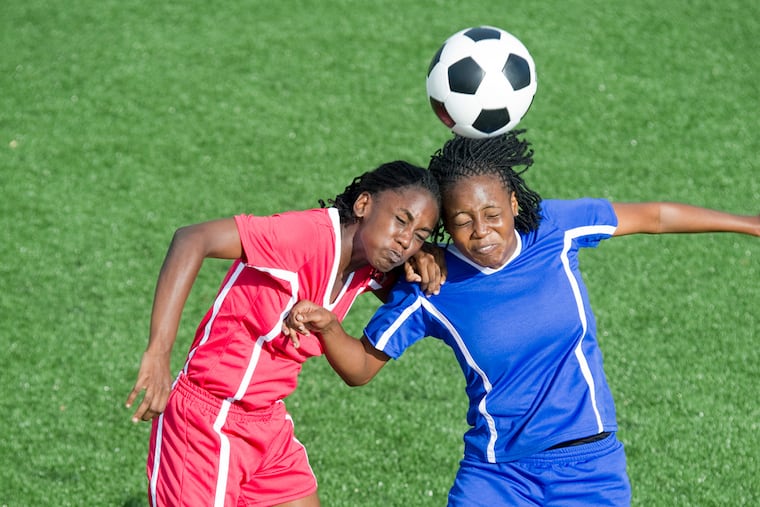Should kids avoid heading a soccer ball — especially girls?
Brain imaging showed heading a soccer ball affected women's brains more than men, found a study released earlier this week. Should you be concerned if your child plays soccer?

Brain imaging showed heading a soccer ball affected women's brains more than men, found a study in Radiology earlier this week. The study adds to a growing body of research that shows women are more susceptible to the impact of heading.
Researchers looked at brain images from 49 men and 49 women soccer players who had each headed a soccer ball more than 400 times. The women had five times more damaged white matter in their brains than the men—demonstrating their brains also had more areas susceptible to potential injury.
The lead author Michael Lipton, MD, PhD, a neuroradiologist and neuroscientist at Albert Einstein College of Medicine, said in interview with NPR that white matter in the brain can be compared to fiber optic cable, which connects a network of computer. White matter is made up thread-like axon nerve fibers that connect neurons to each other, and their protective covering, myelin.
Heading causes these brain tissues to become disorganized, Lipton explained. He also pointed out that the research isn't about concussions. Instead, it's measuring "sub-concussive injuries," or repeated impacts that don't cause any immediate, acknowledged problem for the player, but could be problematic in the long-term.
With the latest developments in brain research, it's highly questionable whether anyone should head a soccer ball or do any repetitive sports head injury regularly seen in the normal play of ice hockey or American football, but clearly women can suffer more damage after the same amount of injury. American football is lessening the violence of kickoffs this fall since it's the most common play where severe head injury occur. The NFL is likely to pay out 1.5 billion dollars to ex-players or their surviving families over the issue of permanent head injuries from trauma in the normal play of the game.
For several reasons these head imaging findings in soccer are not a surprise. We already know that concussions in women are more severe than those in men for equivalent force applied: they make women more unable to function and they last a much longer time. Some possible factors are obvious such as women having thinner skulls. Women also have, in general, thinner bones, lighter builds, and less sturdy tendons. Currently, proportionally more women athletes are also injuring knees and ankles than men doing equivalent sports.
I think we should ban heading in all soccer, but I think that banning heading in women's soccer has to be done now before we find out the likely damaging consequences 20 years down the road.
If your child plays soccer, I would highly recommend taking up this issue with your league to see if any rules could possibly be changed. Discourage your child from heading the ball unless it's absolutely necessary. It's time for soccer to take a closer look at its safety measures for all its players.